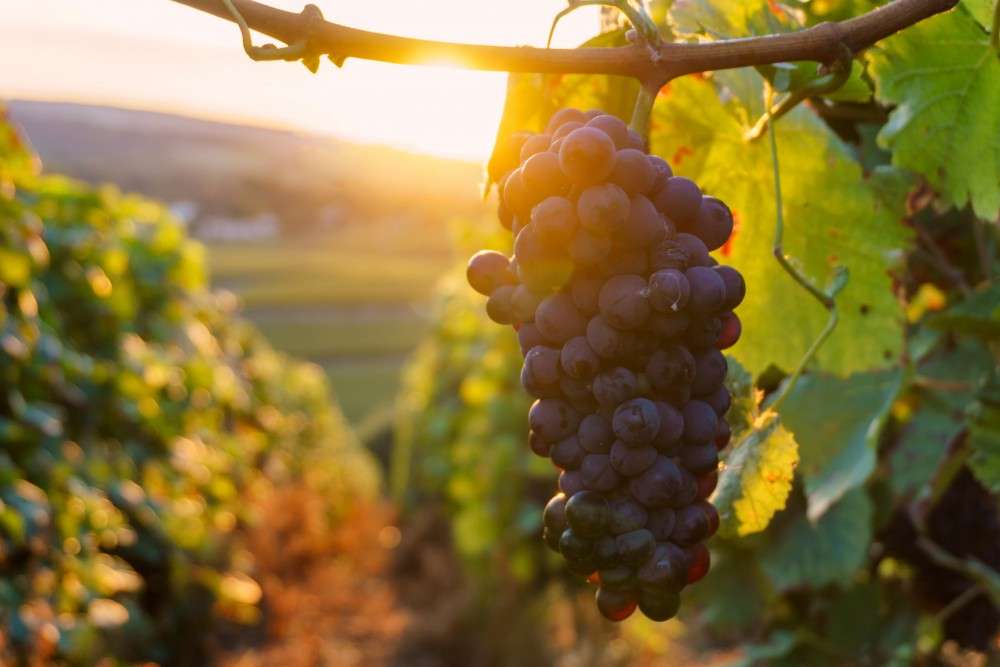Although not widely known, Albania is one of the world’s oldest wine-producing countries. This picturesque Mediterranean nation has a wine production heritage dating back to the Bronze Age, approximately 3,000 years ago. In this article, we will explore Albania’s rich winemaking history, its most renowned grape varieties, and key wine regions.

Historical Background
Albania boasts one of the most ancient winemaking traditions, placing it among the venerable Old World wine-producing nations. Thanks to its moderate winters and hot, dry summers, this typical Mediterranean country enjoys a highly favorable climate and fertile soil for viticulture. Ancient grape seeds, dating back 4,000 to 6,000 years, have been unearthed in Albanian territories. Illyria, the region that encompassed modern-day Albania, had a flourishing viticulture industry long before the expansion of the Roman Empire. During the Roman Empire’s rule, wine production in the region experienced significant growth and organization.
However, during an extended period of Ottoman rule, Albanian vineyards went through a period of decline. It wasn’t until Albania declared its independence that viticulture experienced a resurgence in popularity. Sadly, the industry was nearly obliterated by the phylloxera epidemic in 1933. After the Second World War, a notable revival occurred, and this momentum persisted over the years. Yet, during the repressive communist regime, wine production was primarily focused on quantity rather than quality. This was partly due to the lack of advanced technical resources and outdated production conditions. With the advent of democracy and capitalism, wine production began to steadily recover.
Three decades following the fall of the dictatorship, Albania’s wine industry has gained increasing recognition. Many Albanian wine producers pursued winemaking studies in countries like France, Italy, and Greece, bringing distinctive influences to our winemaking style. As the Albanian wine industry continues to expand, we aspire to reach a broader audience through wine tourism as well.

Wine Regions in Albania
Albania, despite its relatively modest size, boasts a diverse array of territories perfectly suited for winemaking. This diversity allows Albanian vintners to craft an extensive range of Mediterranean wines, each bearing influences from the nearby Adriatic and Ionian seas, as well as continental wines from regions along the border with Greece and Macedonia. Wine connoisseurs frequently classify Albania into four distinct wine regions, primarily delineated by their altitudes. These regions encompass hilly areas in Central Albania, coastal plains, and mountainous expanses in the eastern part of the country. Notably, some of the highest vineyards are situated at altitudes of up to one thousand meters in the slopes of the Albanian Alps. To provide a succinct overview of Albania’s winemaking regions, we can categorize them as follows:
Northern Albania
In these elevated terrains, reaching heights of up to 1000 meters and benefiting from cool continental winds and well-drained, nutrient-rich soils, one finds the ideal grape varieties for producing high-acid wines. A prime example is the village of Kallmet in the northern region of Albania, renowned for its grapes. The northeastern area, known for its drier climate, is home to exceptional ungrafted vines, including the noteworthy Cërruja variety.
Central Albania
The central regions of Albania are characterized by rolling hills, some of which reach heights of 450 meters. These areas are renowned for their diverse and fertile soils, combined with generous exposure to sunlight. These conditions create the perfect environment for the maturation of black and white Shesh grapes, which are the predominant grape varieties in this part of Albania.
Southern Albania
The vineyards in the southern regions of Albania can extend to heights of 800 meters. The western mountain ranges offer protection from harsh winds, making this region conducive to the cultivation of various grape varieties. In these areas, you’ll find wines produced from the white Debina grape, as well as Pulës, an ideal white grape variety for crafting floral wines. Notably, around Vlora in southwest Albania, the Vlosh grape variety thrives, known for producing a distinctive and savory type of wine.

Authentic Grape Varieties
It is widely accepted that the uniqueness and specialty of Albanian winemaking stem from the use of indigenous grape varieties in the country. These native grape varieties hold the most potential for the Albanian wine industry. Fortunately, Albania is blessed with a diverse range of grapes that are exceptionally well-suited for winemaking.
Shesh
Both red and white Shesh are distinct grape varieties naturally grown in Albania, and they represent the most widely cultivated grapes in the country. Shesh i Zi (red Shesh) is ideal for producing rich, deep-colored red wines that are characterized by their richness in tannins and suitability for aging. These wines tend to be full-bodied, with rich nuances of dark fruits such as blackberry or blueberry. On the other hand, Sheshi i Bardhë (white Shesh) is renowned for its production of white wines with notes of citrus and flowers. Both of these varieties are primarily found in the northern and central regions of Albania.
Kallmet
Kallmet is a grape variety that is available in both white and red varieties, but the red variety is more extensively cultivated as it produces some of the finest red wines in the country. Located in the northwestern parts of Albania, the strong winds in this region significantly reduce the need for pesticide use. Red Kallmet grapes exhibit marked acidity and smooth tannins, making wines produced from them an ideal option for oak aging.
Pulëz
This remarkable white grape variety is found in Berat, a beautiful historical city in central-southern Albania. White wine produced from Pulëz grapes is renowned for its fresh floral aromas, long-lasting aftertaste, and striking acidity. It takes only one or two years of aging for this exceptional wine to achieve a perfectly balanced taste, even for those who may not typically favor acidic flavors.


